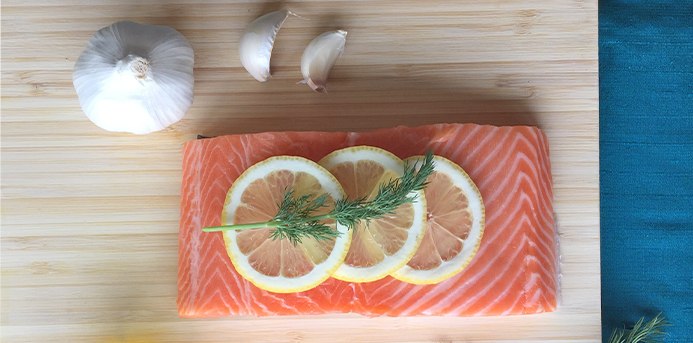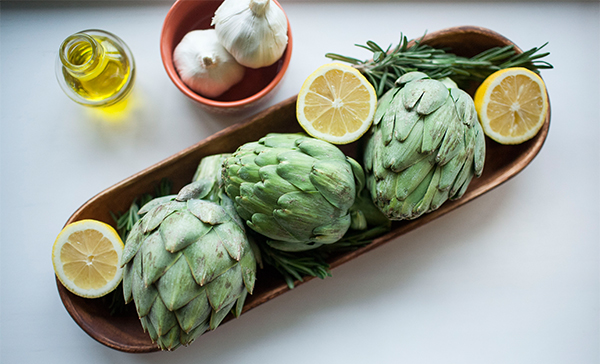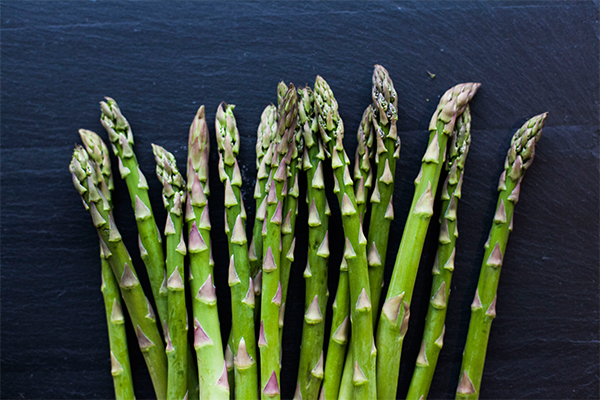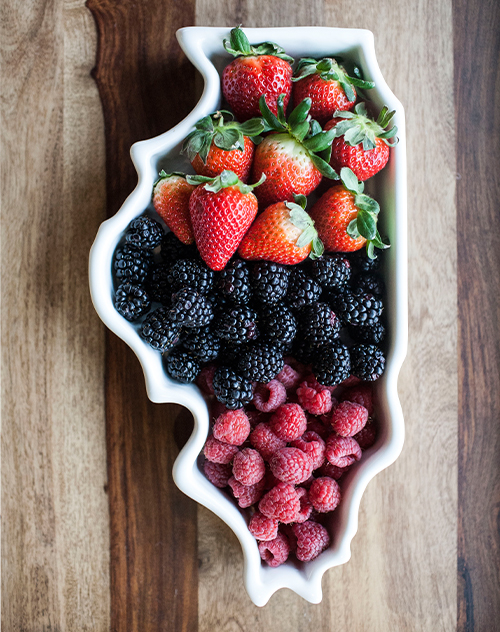With its distinct flavor and pungent aroma, garlic has quite a reputation for making dishes sing. But here’s something you might not have known: eating garlic can bring down your blood pressure, according to Dr. Connie Catellani, a Skokie-based internist who practices integrative medicine. It might not happen overnight, but include garlic in your diet daily and after a while you will see your blood pressure come down, she says.
Garlic isn’t the only food that brings medicinal results, says Catellani, who points out that there are a number of studies that have shown the health benefits of, for instance, turmeric and coriander as well. Inside your kitchen resides a host of foods, spices and herbs that have the potential to improve your health and combat ailments.
Sometimes the health benefits come by accident. Kim Lutz, Chicago author of five cookbooks — her latest, “Ancient Grains,” hits bookshelves May 3 — and the name behind the website Kim’s Welcoming Kitchen, switched her family to a vegan diet after the birth of her oldest son, who had several serious food allergies. Their conversion to a diet rich in vegetables, whole grains and seeds saw his problems clear up, but there was an added bonus: the asthma Lutz had dealt with all her life took a hike too.
Like Lutz, others are becoming increasingly motivated to find ways to improve their health by eating certain foods. A little more than eight years ago, South Carolina-based Dr. Ronald Grisanti launched Functional Medicine University, an online, post-graduate continuing education course for healthcare providers. He’s seeing a “big upswing” in mainstream health professionals registering for instruction. He’s licensed some 2,600 healthcare professionals — including medical doctors, nurses, and chiropractors like himself — from 49 states (“all except South Dakota,” he says with a chuckle) and 68 countries. They’re individuals who want to offer their patients something beyond prescriptions. Plus, in an era when everyone Googles everything, patients come in and want to know, particularly when it comes to diet, what they can do to relieve their symptoms, says Grisanti.
This interest could be seen as a natural outgrowth of the local food movement. Angela Mason is associate vice president for urban agriculture at the Chicago Botanic Garden and head of the Garden’s Windy City Harvest. She’s witnessed firsthand the dramatic demand for locally grown foods in the 13 years she’s been involved with Windy City Harvest. People of all ages are seeing the value of eating good, whole foods, things they’ve grown themselves, according to Mason.
So is it any wonder they’ve also taken the next step to consider the medicinal aspects of their foods?
Oftentimes that interest in exploring food as medicine occurs when individuals face an increase in medication or other medical interventions. Then they decide “first let me see if there’s something I can do instead,” says Dr. Judy Fulop, a naturopathic doctor who has been with Northwestern Integrative Medicine for 15 years.
Rheumatoid arthritis is the perfect example. Wheat, gluten, dairy, diet soda/foods, sugar and alcohol can exacerbate the inflammation that accompanies rheumatoid arthritis. Adjusting one’s daily diet to include fish such as salmon, loads of fresh vegetables, coriander, sweet potatoes and green tea, for example, can not only lessen the flare-ups those with RA often experience, but also make the periods between them longer, according to Fulop.
Sometimes, however, prevailing messages about what improves a condition overshadow other helpful advice, says Melissa Joy Dobbins. The North Shore resident is a registered dietitian and certified diabetes instructor who features healthful eating podcasts on her website, Sound Bites. Dobbins says many have heard that reducing sodium helps regulate high blood pressure. Yet “by and large” most people with high blood pressure are deficient in potassium, according to Dobbins, and can improve their condition by by adding potassium-rich foods, including fish (think tuna, cod, halibut), sweet potatoes, spinach, baked potatoes or nuts to their diet. For more guidance on using food choices to lower blood pressure, Dobbins recommends looking into the DASH (Dietary Approaches to Stop Hypertension) Diet.
Using food as medicine hasn’t escaped the attention of the cookbook industry, either. A health concern ignites research and discovery, and the culinary world responds quickly with recipe development. Dale Pinnock, author of several books including “The Medicinal Chef,” tells visitors to his website his first interest in the connection between food and health began as a way to combat acne. Celebrity restaurateur Seamus Mullen — TV viewers may remember from his stint as a finalist on “Next Iron Chef” — says in “Hero Food” that he wrote the cookbook to help not only others but himself use healthful food choices to lessen the impact rheumatoid arthritis was having on his life.
Even when facing the disease that tends to scare us most — cancer — food plays a pivotal role. “Healthy eating is an important part of treatment and recovery,” says Carolyn Lammersfeld, vice president of integrative medicine and registered dietitian at Cancer Treatment Centers of America. Better food choices improve a cancer patient’s bone health, maintain muscle mass and improve the immune system’s function. While the needs of each individual patient are assessed before a specific eating plan is devised, overall the CTCA encourages a Mediterranean-style diet, one that is plant-based and includes beans, legumes and whole grains as well as fruits and vegetables. Patients are strongly encouraged to avoid fast food, sugary drinks, highly processed foods and meats, and to limit red meat to 18 ounces a week. They also are given advice on how to modify favorite foods so they can still be enjoyed. In the cookbook she co-authored with Dr. Maurie Markman and Christina Torster Loguidice, “Cancer Nutrition & Recipes for Dummies,” the focus is on eating healthy without feeling you’re giving up everything you like.
In the end, the idea that food can heal the body really shouldn’t surprise us. “Everything is connected to what we eat,” says Fulop.
Inspired to begin incorporating healing foods into your diet? Start your day off right with this antioxidant-packed smoothie.
Pomegranate Antioxidant Smoothie
Serves 2
Prep time: 5 minutes
- 8 ounces pomegranate juice
- 1/4 cup strawberries
- 1/4 cup blackberries
- 1/4 blood orange, peeled
- 1/2 cup blueberry yogurt
- 1 cup crushed ice
- Agave nectar, pure maple syrup or honey (optional, to taste)
Directions:
1. In a blender, add the pomegranate juice, strawberries, blackberries, and blood orange. Cover and blend on high until the fruits are well mixed.
2. Add the yogurt and crushed ice, and blend on high until the mixture is smooth.
3. Taste and add agave nectar, maple syrup, or honey, if needed. Start with a tablespoon. If adding the nectar, maple syrup, or honey, blend again. Pour into two glasses and serve immediately.
Reprinted with permission from Cancer Nutrition & Recipes for Dummies, Copyright © 2013 by Maurie Markman, MD; Carolyn Lammersfeld, RD; Christina Torster Loguidice
More from Make It Better:





